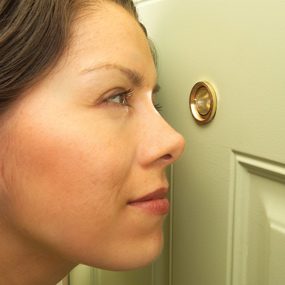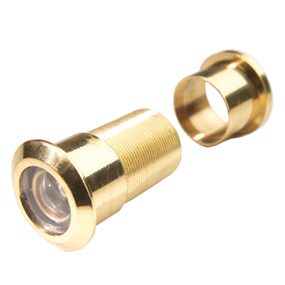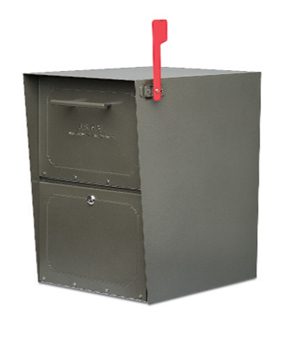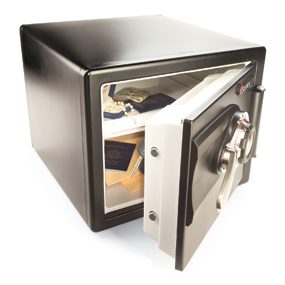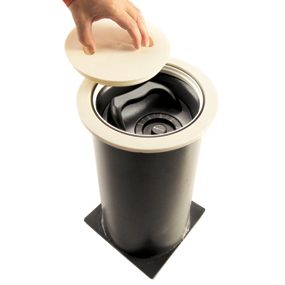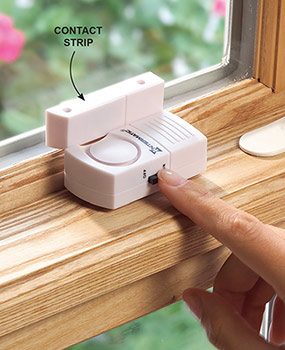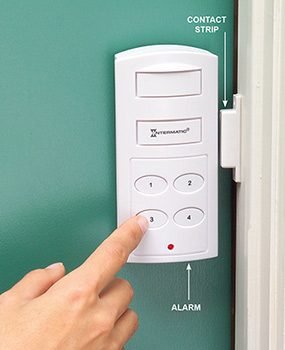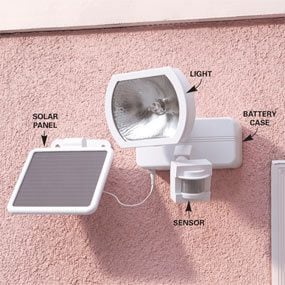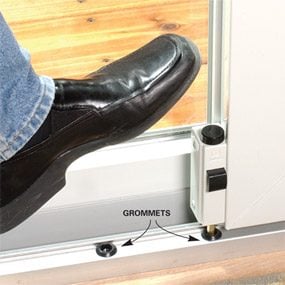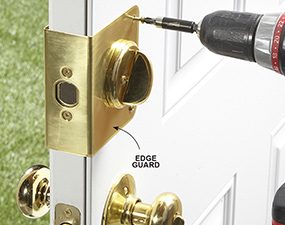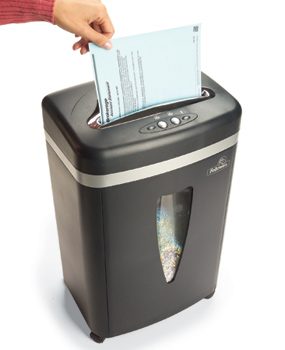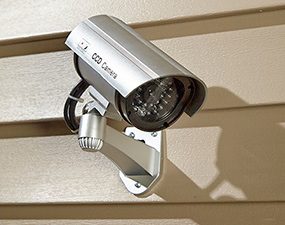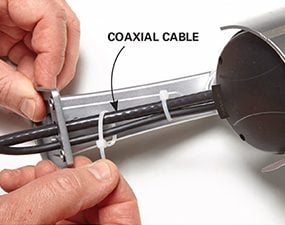Safe Home Security Tips
Updated: Feb. 21, 2024Protect your house and your loved ones with these inexpensive, easy-to-install devices!

Keep your home and your loved ones safe—even If you don't have an expensive home security system. Our tips will help you protect yourself with inexpensive, easy-to-install devices.
Know who’s there
Protect your mail
Understand Your Foes
Most burglaries occur on weekdays between 10 a.m. and 5 p.m. The perpetrators are usually substance abusers in their twenties looking for easy-to-pawn items to raise quick cash. They look for homes that appear unoccupied during the day, are dark at night, and display signs of wealth (such as immaculate landscaping, expensive cars and fancy decks). They prefer homes that are secluded or shielded by fences or shrubbery. And they always prefer breaking in through a ground-level side window or back door.
Most burglars don’t pick locks or break glass. That takes too long, makes noise and risks personal injury. Instead, they simply kick in a door (even doors with a dead bolt) or pry open a window or sliding patio door. In many cases, they take advantage of a homeowner’s carelessness by climbing in through an open window or unlocked door (window screens and storm doors offer no protection). Burglars tend to shy away from homes with dogs, and homes with an alarm system.
Once inside, burglars head right to the master bedroom looking for gold jewelry, cash, furs and guns. Next, they scoop up prescription drugs from the bathroom and finish up with laptops, tablets and smartphones. Then they hightail it out.
Your job is to make your home less target-worthy, frustrate their attempts to break in and limit your losses if they do manage to get inside.
Video: 3 Places to Hide Valuables at Home
Install a small safe
Add inexpensive door and window alarms
Pin Locks for Double-Hung Windows
The factory latches on double-hung windows are no match for a burglar with a pry bar. But they can’t get past inexpensive pin locks (about $2 each). You can install a pin in just a few minutes per window. Drill a hole to lock the window closed, and a second hole a few inches up to lock the window partly open for ventilation.
Put motion detector lighting anywhere
Alarm Systems Are Easier to Install Than You Think
Police interviews with burglars prove that alarm systems are a deterrent. If burglars are convinced your home has a real alarm system, they’ll move on to a more vulnerable target rather than take a risk at your home.
You can buy a professional grade wireless alarm system for about $200 from many online sources. Installing professional alarm hardware is easy, but programming the system can be a challenge. A battery-powered wireless DIY alarm system requires no wiring. Just plug the control box into your Internet router, mount the sensors and arming station, and program the unit with your computer.
For more information on installing a professional security system, check out DIY Security System.
If you don’t want to tackle the programming or can’t find a supplier who will program it for you, skip the professional gear and buy a consumer- style DIY wireless alarm instead (available at home centers). Starter kits come with a control unit, arming station, motion sensor and a few door/window sensors (Photo 1). But plan on buying enough extra sensors to install on each ground-level door and window.
Mount the arming station in a location where a burglar can see it from the most likely entry door or window. Then mount the sensors, connect the control box to power and your Internet router and program the system from your home computer. The system notifies you of a break-in or system failure with text messages and phone calls.
Stick yard signs by your front and back doors. Then plaster stickers on all the ground-floor windows so everyone can see them.
Secure patio doors
Reinforce exterior doors
Burglars can open most entry doors with a few kicks or body blows. Even with a dead bolt, the blow shatters the doorjamb and splits the door itself (even steel doors). You can dramatically increase the strength of your doorjamb by installing longer strike plate screws that anchor into the stud behind the jamb.
The first step would be to take out one of the existing screws. If it’s shorter than 3 in., replace it. For even greater doorjamb security, consider installing a 6-in.-long heavy-duty strike plate. This is a much bigger job because you have to mortise a larger opening and drive in six 3-in. screws. However, if your entry door butts up to a sidelight and you can’t install long screws, buy and install a 48-in.-long doorjamb reinforcement plate (available at home centers).
Next, prevent door splitting with a door edge guard. Measure the door thickness and dead bolt lock backset before you head to the home center. Then buy a guard to fit around your door and dead bolt. Installing the guard takes about 15 minutes.
Beef up your wooden garage entry door
Cut Your Losses If They Do Get In
Immediately file a fraud alert with credit bureaus and contact your bank and credit card companies.
- Inspect your checkbook for missing checks—close the account if any are missing.
- Don’t keep cash in your bedroom.
- Get a nice-looking jewelry box and fill it with your less expensive jewelry. Keep your valuable jewelry elsewhere.
- Keep guns locked in a safe.
- If you haven’t taken steps to secure your home since the burglary, do it now! Burglars often come back about six weeks later to get the brand new items you bought with the insurance proceeds.
Shred papers to protect your identity
Add video surveillance, real or fake
Burglars are increasingly aware that they’re being watched, so a video camera can be a deterrent as long as the crooks believe it’s real. However, you can get the same deterrent value by modifying an inexpensive fake camera so it looks real. Find fake cameras at home centers and online stores (for instance, Outdoor Dummy Security Camera , available through our affiliation with Amazon.com.). Skip the smoked glass “dome” style and get a more traditional-looking unit. Mount it near the vulnerable doors and windows, but don’t activate the flashing light—real cameras don’t have lights.
